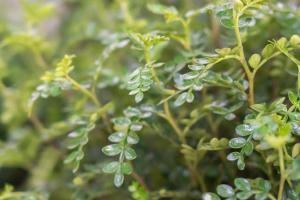Can You Put Rocks on Top of Big Potted Plants?
Potted plants are a great way to bring a bit of nature into your home or office. Whether large or small, they require a specific type of care to thrive, including proper watering, fertilizing, and sunlight exposure. However, one question that often arises among plant enthusiasts is whether it's okay to put rocks on top of big potted plants. In this article, we'll explore this query and provide you with a conclusive answer.
The Benefits of Adding Rocks to Potted Plants
Adding rocks on top of potted plants has several benefits. One of the significant advantages is that it helps retain moisture, which is vital for the plant's overall health. Rocks act as a barrier between the soil and the air, slowing down the rate at which moisture evaporates. By doing so, the plant's roots have enough time to absorb the water, ensuring it has enough moisture to keep it hydrated.
Rocks also help prevent soil erosion by holding the topsoil in place, especially in outdoor plants exposed to heavy rainfall. In turn, the root system remains stable, making it less prone to damage from water runoff during rainy seasons.
The Drawbacks of Using Rocks on Top of Potted Plants
As with most things in life, there are pros and cons to everything, and placing rocks on top of potted plants is no exception. One of the main problems associated with using rocks on top of potted plants is that they may hinder the plants' growth or even cause damage to the roots system. The reason for this is that rocks act as an additional layer on top of the soil. Over time, they may compact or settle, making the soil more dense and more challenging for the roots to penetrate.
Another downside of using rocks on top of big potted plants is that they may trap heat, especially when placed in direct sunlight. The excess heat can cause soil temperatures to rise, harming the plants' roots, leading to wilting or death. Therefore, it's essential to consider the environmental conditions of your plants and the available sunlight before placing rocks on the potted plant's top.
The Best Alternatives to Using Rocks on Potted Plants
If you decide that placing rocks on top of big potted plants is not the best option, several alternatives can help you achieve similar results. For instance, you can use a layer of mulch or organic material, such as dried leaves, to help retain soil moisture. Mulch also provides additional nutrients for the plants and helps prevent soil erosion, keeping the soil stable and well-aerated.
Another alternative is to use a self-watering planter. These types of planters have a reservoir that holds water at the bottom, which then moves to the plant's soil through a wick or other mechanism. This helps prevent over-watering or under-watering of the plant, ensuring it's always getting enough moisture for optimal growth.
In Conclusion
Adding rocks on top of big potted plants can be helpful in some situations, but it's essential to consider the environmental conditions and the plant's specific needs. If you opt to use rocks, ensure that they don't cause compaction, trap excess heat, or otherwise harm the plant's roots. Alternatively, you can consider using organic mulch or a self-watering planter to help retain soil moisture and provide the plant with the necessary nutrients for healthy growth.

 how many times do yo...
how many times do yo... how many planted tre...
how many planted tre... how many pine trees ...
how many pine trees ... how many pecan trees...
how many pecan trees... how many plants comp...
how many plants comp... how many plants can ...
how many plants can ... how many plants and ...
how many plants and ... how many pepper plan...
how many pepper plan...
































